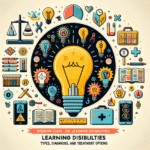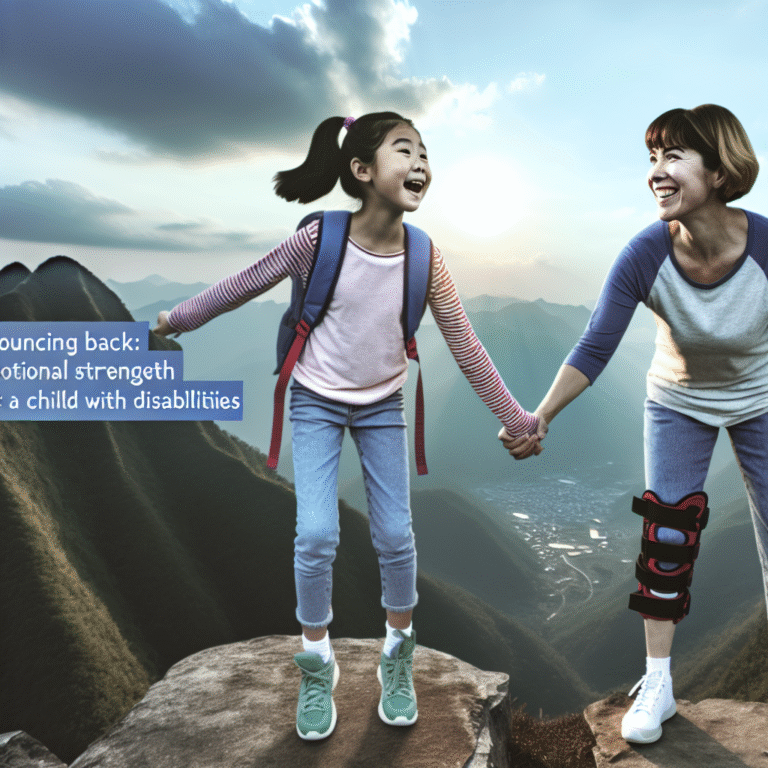
Navigating Dyslexia: Perspectives on Its Classification as a Learning Disability
Introduction
Imagine a world where reading is a treasure hunt, but the clues are jumbled, and the maps are missing parts. For millions of individuals, this is the reality of living with dyslexia. Navigating Dyslexia: Perspectives on Its Classification as a Learning Disability is crucial not only for educational policies but also for understanding the complexities of a condition that affects diverse individuals across ages, backgrounds, and abilities.
Dyslexia, often misunderstood and misrepresented, is defined as a specific learning disability that impedes reading due to difficulties in phonological processing, spelling, and decoding. Yet, the classification of dyslexia raises essential questions: How do we define it as a learning disability? What does it mean for those affected? And how can we better navigate the waters of understanding and supporting individuals with dyslexia?
In this article, we’ll delve into the nuances surrounding dyslexia, exploring perspectives on its classification and impact on learners, educators, and society at large. We will put a spotlight on personal stories, enlightening case studies, and practical strategies to foster an inclusive environment.
Understanding Dyslexia: A Multifaceted Condition
What is Dyslexia?
To understand how we navigate dyslexia, we first need to define it accurately. Dyslexia is characterized by difficulties with accurate and/or fluent word recognition and by poor spelling and decoding abilities. These challenges stem from a deficit in the phonological component of language. It’s essential to note that dyslexia does not reflect an individual’s overall intelligence; many dyslexic individuals are exceptionally bright and talented in various domains.
Classification as a Learning Disability
The classification of dyslexia as a learning disability is a critical perspective in educational settings. Learning disabilities are defined as disorders that affect the brain’s ability to receive, process, and respond to information. Dyslexia, as recognized by the DSM-5 (Diagnostic and Statistical Manual of Mental Disorders), fits this definition, leading to academic impairments. However, this classification can be contested, with some arguing for a broader or different understanding.
The Debate: Is Dyslexia a Disability?
One of the most engaging discussions within the realm of dyslexia is whether it should be labeled a disability or simply a different way of learning. Proponents of the learning disability classification argue that it provides essential support to those needing accommodations. Critics suggest that labeling dyslexia as a disability might limit the perceived capabilities of individuals and discourage strengths that may emerge from their unique learning processes.
Navigating Dyslexia: The Role of Educators and Support Systems
The educational landscape plays a significant role in more than just classifications—it also shapes experiences. Navigating Dyslexia: Perspectives on Its Classification as a Learning Disability can’t fully be appreciated without understanding the critical role educators and support systems play.
Case Study 1: Empowering Educators
In a mid-sized school district, the administration implemented a training program for teachers focused on dyslexia awareness. Teachers learned about various teaching strategies tailored for dyslexic students, including multisensory learning techniques.
Analysis: This initiative demonstrates how proper training and awareness can lead to improved educational outcomes. By implementing techniques that cater to the unique needs of dyslexic students, educators can foster an inclusive environment that promotes success.
The Emotional Landscape of Dyslexia
Understanding dyslexia also requires examining the emotional experiences of individuals diagnosed with the disorder. Navigating Dyslexia: Perspectives on Its Classification as a Learning Disability must encompass the emotional and psychological effects of dyslexia on individuals and their families.
Emotional Impact
Many individuals with dyslexia grapple with anxiety, frustration, and low self-esteem due to their learning challenges. These emotional hurdles can significantly impact their academic performance and social interactions, making it essential to create supportive environments.
Celebrating Strengths: The Positive Side of Dyslexia
While dyslexia presents challenges, it also often comes with unique strengths. Many dyslexic individuals are exceptional problem solvers, creative thinkers, and have strong spatial reasoning skills.
Case Study 2: Revolutionizing Industries
Historically noted dyslexic individuals, such as Einstein and Richard Branson, have led innovative paths in their fields, showcasing that success can emerge from challenges.
Analysis: This case highlights that dyslexia can foster unique talents and perspectives that fuel creativity and innovation. Celebrating these strengths offers a more balanced view of dyslexia beyond mere classification as a disadvantage.
Developing Effective Strategies for Support
To effectively navigate dyslexia, it’s crucial to develop and implement research-based strategies that cater to individual needs.
The Role of Technology
Technological advancements have proven invaluable for individuals with dyslexia. Tools like text-to-speech software, audiobooks, and apps designed for reading difficulties can significantly alleviate the challenges faced.
Navigating Accommodations and Laws
In many regions, laws such as the Individuals with Disabilities Education Act (IDEA) and Section 504 of the Rehabilitation Act provide specific protections and resources for individuals with learning disabilities, including dyslexia.
Table: Key Accommodations for Dyslexic Students
| Accommodation Type | Description |
|---|---|
| Extra Time | Allowing additional time for reading assignments and tests to reduce pressure. |
| Alternate Formats | Providing materials in audiobooks or digital formats to enhance accessibility. |
| Specialized Instruction | Implementing specialized teaching strategies tailored for dyslexic learners. |
| Use of Technology | Encouraging the use of assistive technology to support reading and writing tasks. |
Conclusion
Navigating Dyslexia: Perspectives on Its Classification as a Learning Disability opens up a critical conversation about educational practices, emotional support, and the power of unique learning styles. It’s essential to consider both the hurdles and strengths that come with dyslexia to create an informed, compassionate approach to education.
As we move forward, let’s empower educators, support families, and embrace dyslexia as a different way of experiencing the world. By doing so, we can inspire the next generation to find their own paths to success, turning perceived disabilities into incredible abilities.
FAQs
1. What is dyslexia, and how is it diagnosed?
Dyslexia is a specific learning disability affecting reading abilities. Diagnosis typically involves assessments from educational psychologists, which include evaluating reading skills, phonological processing, and other related abilities.
2. How does dyslexia affect academic performance?
Dyslexia can lead to challenges in reading, writing, and sometimes math, affecting overall academic performance. Early intervention is critical to address these issues.
3. What accommodations are available for students with dyslexia?
Accommodations may include extra time on tests, access to audiobooks, specialized instruction, and the use of assistive technology.
4. Can dyslexia be outgrown?
While many individuals find ways to manage their dyslexia effectively, it is typically a lifelong condition. However, with support and strategies, individuals can improve their skills significantly.
5. What are some common misconceptions about dyslexia?
Common misconceptions include that dyslexia is a reflection of intelligence, that it can be outgrown, and that it affects only reading abilities. In reality, dyslexia is a complex condition that varies greatly among individuals.
6. How can families support a child with dyslexia?
Families can support a child with dyslexia by advocating for appropriate educational accommodations, celebrating their strengths, providing emotional support, and exploring resources that promote literacy skills.
In this exploration of Navigating Dyslexia: Perspectives on Its Classification as a Learning Disability, we see a picture forming that invites understanding, acceptance, and action. The road through dyslexia may be winding, but with proper tools, support, and an open heart, it can lead to paths of brilliance and success.









